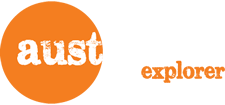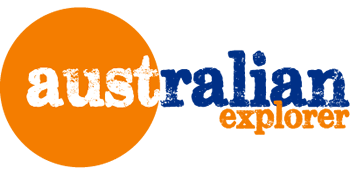Fraser Island is the worlds largest sand island stretching around 120km from North to South and 15km from East to West, covering a total of 160,000 hectares. It was formed during the ice age by strong winds, which blew sand from New South Wales to where Fraser Island now stands off of the coast of Queensland.
The name Fraser Island came from Eliza Fraser, who was shipwrecked on the island along with her husband. By the Aborigines the island is known as K'gari meaning 'Paradise', which suitably matches the islands beauty. The Aborigines were forced off the island, when timber cutters started cutting down the trees. This has stopped since, and luckily beautiful forested areas still remain. You can find out about the islands forestry from the Central Station, near Wanggoolba Creek. Although deforestation took place on the Fraser Island, it is now listed as a World Heritage area.
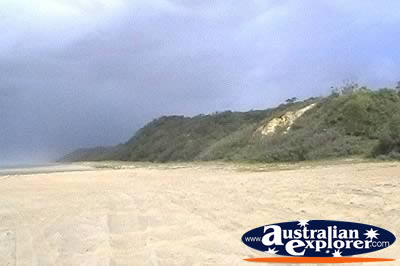 The Northern half of the island is made up of the Great Sandy National Park, with several pretty lakes dotted around the park. More lakes continue on the southern half of the island, with a total of 24 freshwater lakes that cover the whole island. They are all different, featuring magnificent colours. A refreshing experience is to swim in one of the many lakes, which is very rewarding after walking to the lake.
The Northern half of the island is made up of the Great Sandy National Park, with several pretty lakes dotted around the park. More lakes continue on the southern half of the island, with a total of 24 freshwater lakes that cover the whole island. They are all different, featuring magnificent colours. A refreshing experience is to swim in one of the many lakes, which is very rewarding after walking to the lake.
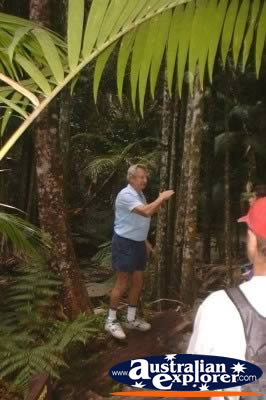 Fraser Island is covered in beautiful sub-tropical rainforest and offers outstanding natural wonders. Within the rainforest you will see large Brush Box, Kauri Pines, Piccabeen Palms and Satinay. You may also get the opportunity to see the rare angiopteris fern, which is actually one of the largest ferns in the world.
Fraser Island is covered in beautiful sub-tropical rainforest and offers outstanding natural wonders. Within the rainforest you will see large Brush Box, Kauri Pines, Piccabeen Palms and Satinay. You may also get the opportunity to see the rare angiopteris fern, which is actually one of the largest ferns in the world.
Along with the rainforests you will also see many clear blue lakes, long sandy beaches, beautiful rocky cliffs, and a large mangrove system.
Fraser Island is also a haven for wildlife, which you will see all over the island. There are over 200 different species of birds around Fraser Island, as well as a number of different other animals. Dingo's would be the most common animal found on Fraser Island, although you may also see Fying Foxes, Possums, Snakes, Turtles and Wallabies.
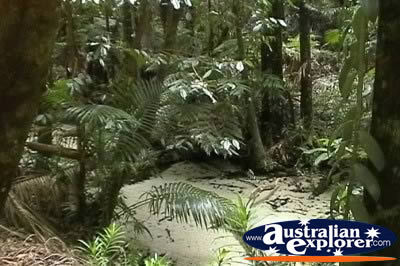 There are plenty of activities on the island from bushwalking, fishing, swimming (in the lakes as the sea is too dangerous) and exploring the island by 4WD. There are various 4WD tours which you can join, or if you'd prefer to travel independently then you can hire a 4WD (or bring your own) either on the island or before you get there. To hire a 4WD there are a number of local companies you can choose from.
There are plenty of activities on the island from bushwalking, fishing, swimming (in the lakes as the sea is too dangerous) and exploring the island by 4WD. There are various 4WD tours which you can join, or if you'd prefer to travel independently then you can hire a 4WD (or bring your own) either on the island or before you get there. To hire a 4WD there are a number of local companies you can choose from.
Getting around the island is easy, grab yourself a map and start exploring. There are some fantastic walking trails around the island, which really allow you to experience the beauty of Fraser Islands natural environment. Many of the walking trails start near the end of another walking trail, making it easy to explore and get around the island. If your time is limited you can also drive to the start of individual walking trails, and follow these.
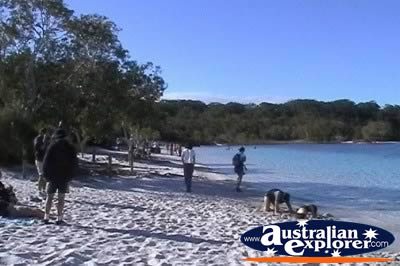 The most popular areas to explore include the inland regions of the southern islands lakes, as well as all along the islands east coast. Just east of the Kingfisher Bay Resort and Wanggoolba Creek is Central Station and the beautiful Lake McKenzie. The lake is also called 'Window' Lake and is spectacular to swim and snorkel in. Directly east of Lake McKenzie is Lake Wabby the most famous lake on Fraser Island and a great swimming spot. There is a pleasant walk to Lake Wabby from near Eurong, although you should also drive further north to the fabulous lookout.
The most popular areas to explore include the inland regions of the southern islands lakes, as well as all along the islands east coast. Just east of the Kingfisher Bay Resort and Wanggoolba Creek is Central Station and the beautiful Lake McKenzie. The lake is also called 'Window' Lake and is spectacular to swim and snorkel in. Directly east of Lake McKenzie is Lake Wabby the most famous lake on Fraser Island and a great swimming spot. There is a pleasant walk to Lake Wabby from near Eurong, although you should also drive further north to the fabulous lookout.
You can continue along Seventy Five Mile Beach or take some of the tracks that lead of towards Lake Garawongera and Yidney Scrub. Just north of Eli Scrub is the Maheno Wreck, which is clearly visible from the beach. From here the land changes into National Park, and you will pass the fabulous Cathedrals which are beautiful, coloured sand cliffs. North again is the spectacular Indian Head which offers views that are out of this world. You can continue right upto the northern tip of the island Sandy Cape, where there is a lighthouse. There are also two further shipwrecks either side of the northern tip, the Marloo Wreck and the Panama Wreck.
There is plenty of accommodation dotted around the southern part of the island. On the western side is the Kingfisher Bay Resort, which has various types of accommodation and great facilities. On the eastern side of the island is the Eurong Beach Resort at Eurong with further accommodation in Happy Valley. Accommodation can also be found on the southern tip of the island at Hooks Point.
Camping is also available on the island, with several of the grounds offering toilets and showers. These include Central Station, Dundubara, Lake Boomanjin, Lake McKenzie, Waddy Point and Wathumba. You will need a permit to camp, as well as take a vehicle onto Fraser Island, both of which you can get from the local EPA offices or from Hervey Bay City Council Ph:(07) 4125 0222.
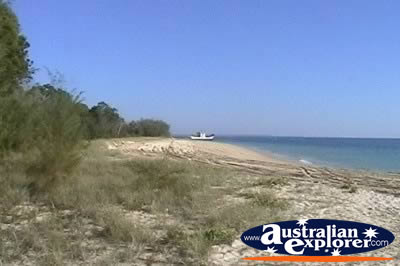 You can get to the island from Inskip Point, River Heads and Urangan, which stop at various points on the island. The Rainbow Venture travels between Inskip Point to Hook Point on the southern tip of the Island. You can get to Inskip Point by heading East from Gympie and North from Rainbow Beach.
You can get to the island from Inskip Point, River Heads and Urangan, which stop at various points on the island. The Rainbow Venture travels between Inskip Point to Hook Point on the southern tip of the Island. You can get to Inskip Point by heading East from Gympie and North from Rainbow Beach.
The Fraser Venture travels from River Heads to Wanggoolba Creek, again on the west coast. Also from River Heads the Kingfisher Bay Barge departs and travels to the King Fisher Resort itself. The Fraser Dawn leaves from Urangan and travels to Moon Point on the western coast of the island. The Kingfisher 2 Fastcat is for people only and again takes you to the resort, but leaves from Urangan.
